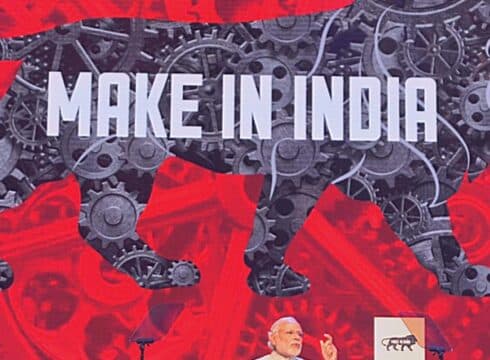‘Made in India’ finds a big spot in retail strategy
Awareness and Phygital will be a key focus post lockdown. Digital slated to gain prominence amongst all other channels
A win-win for Indian and foreign brands - only pride and no prejudice in a self-reliant Indian market
Inc42 Daily Brief
Stay Ahead With Daily News & Analysis on India’s Tech & Startup Economy
With Covid-19 taking precedence over all other aspects of our lives currently, unpredictability runs high across sectors.
If I were to ask the usual ‘where do you see yourself in the next five years’ question in an interview, nobody would have a clue. In fact, we are at a stage where none of us can hazard a guess around how the world would look like five months from now.
In such a scenario, adopting a self-reliant attitude is the best bet, says the Indian Government. In his latest address to the nation, Prime Minister Narendra Modi urged the nation to go local and be the voice for it too. The term ‘vocal for local’ and ‘atmanirbhar Bharat’ have become trending topics across engagement platforms since.
What is encouraging to note is the quick uptake by consumer brands which have already begin to turn the tide towards ‘Swadesi’ and ‘Made in India’ tags. From a US-based nutraceutical brand pledging to go ‘vocal for local’ in its recent twitter campaign to top-to-mid-range Indian brands sharpening the ‘Be Indian. Buy Indian’ ethos to customers across platforms being swayed by digital advertising and promotions – change is evident across layers.
As per a PGA Labs report, 21% of advertising spends in FY19 was allocated towards digital which represented ~$3.5 Bn out of $16.5 Bn pie. Digital adoption by advertising is expected to grow at a CAGR of 30% which is already being considered an understatement with how Covid is changing advertising trends across channels.
Made In India – The Cultural Push
As Government and businesses buckle up to restore the new economic normal post a few months of lockdowns, most of the traditional sectors would require support to start inching back to business as usual. Considering overall risk-averse sentiments in the economy, lending pride to ‘made in India’ ethos gives an undoubtable edge to local Indian brands e.g. Amul, Dabur, Godrej, Tata.
Indian corporations have also supported the Government wholeheartedly during last few months by rolling out donations and by quickly pivoting to start producing essentials like hand sanitizers, ventilators and masks.
However, this does not indicate gloom for multinational corporations since this comes as an opportunity for them to focus on right promotion strategies including ‘making in India’ and to reinforce their commitment to the country. A tilt towards ads with nationalistic fervours can clearly be seen in recent advertising campaigns where products are being placed against tri-colour backgrounds and where commitment to India’s wellbeing is often being alluded to.
Brand Strategy – An Optimism Filled ‘Swadesi Angle’
Brand strategies will be key to leveraging the opportunity created by ‘vocal for local’. Common customers do not understand the brand origin when it comes to consumer brands e.g. American brand Colgate, synonymous with toothpastes in India, is one of the most recognizable household brands in the country.
If one were to ask the senior citizens or public about it, they will be confident in assuming it to be an Indian brand. This just goes to show that ‘Swadesi’ is not a perception fully owned by domestic brands, but it generally indicates a brand which is broadly recalled with fondness across the country.
Hence, as sales pitches and campaigns turn desi, it is an opportune time to see how brands reposition their broader connect with masses as Indian-ness and attract a diverse, multi-tiered consumer group. With Covid-19 accelerating the digital wagon for advertising and media, consumer preferences will be skewed towards ‘ease through digital’.
An increasing preference for online shopping will be key to consumer brands picking up Indian flavours to their overall branding and sales strategies
Integrating Physical And Digital Worlds – A Long-Term Strategy
Shift to digital has been an oft-repeated theme in last few years however Covid-19 just accelerated the adoption speed to 10 times the previous rates thereby shattering the ground from beneath for businesses, Governments, and people alike. Post-Covid, people would prefer to avoid shopping malls and other public places hence making digital reach outs to customers and suppliers would not just be advisable but essential.
Retail would do well to stop functioning in silos and focus on a flexible Phygital approach to inculcate the best of both worlds. Post-Covid customer’s journey would be tipped towards a digital-first approach which would possibly start from a fun video on Instagram with the perfect product integration on the customer’s hand-held.
Therefore, creating an endless aisle that starts from the online presence on the brand’s social media account connecting to the ecommerce or physical store will the ideal Phygital platform converging at the Point of Sale – PoS. Also, Artificial Intelligence and Augmented Reality would be good to use technologies to build an immersive experience for the buyer, in influencing purchase decisions.
With this background, what comes to fore is how Covid-19 has accelerated digital adoption for the sector and how brand personalities will require modifications for a better customer connect.
{{#name}}{{name}}{{/name}}{{^name}}-{{/name}}
{{#description}}{{description}}...{{/description}}{{^description}}-{{/description}}
Note: We at Inc42 take our ethics very seriously. More information about it can be found here.


